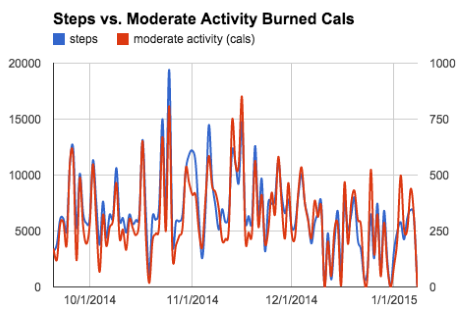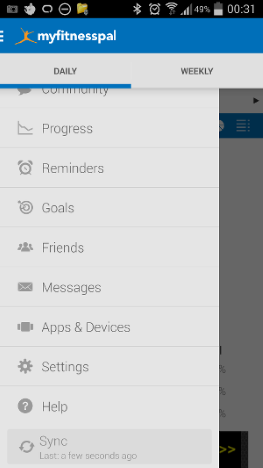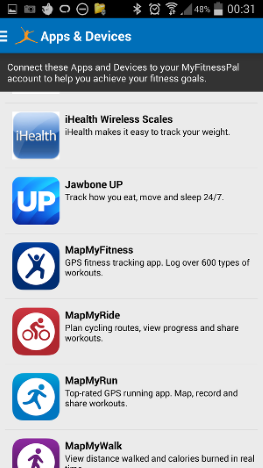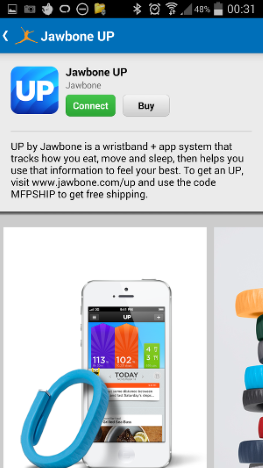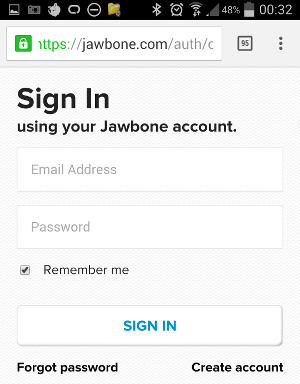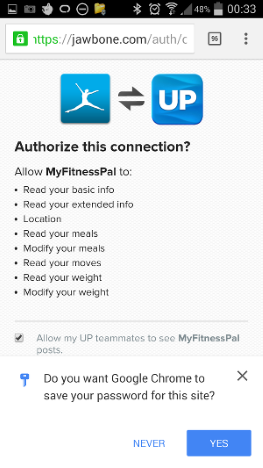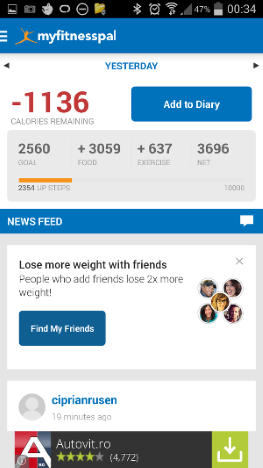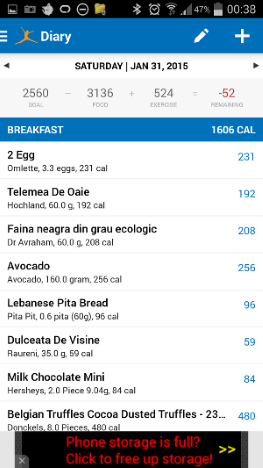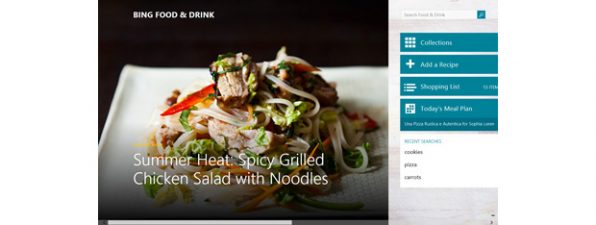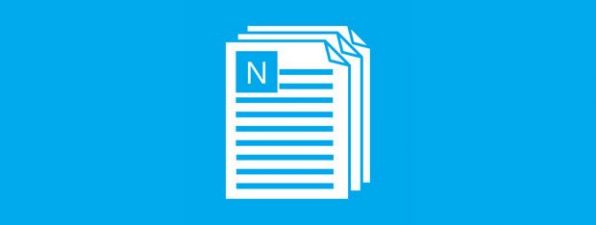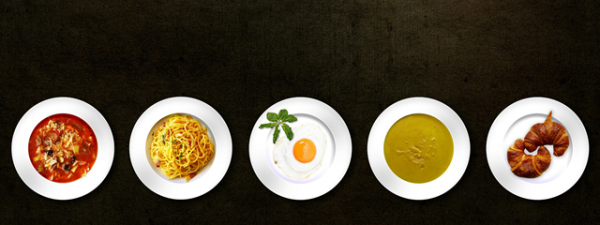
Last evening, I was watching the movie Still Alice and I saw one of the actors wearing a Jawbone UP device. This is new for me and it signals that wearables are slowly but surely becoming commonplace. Lately, many people ask me "what should I get?" without having a clear idea on how these devices can improve their life. Well… one good reason to buy a wearable is to help you lose weight. In this article, I will share how to use a wearable device in conjunction with the MyFitnessPal app, in order to track your calorie deficit and actually lose weight.
Which Wearable Device Should I Get?
First things first. Not every tool is good for every type of job. And that includes wearable devices. While most of them are being marketed as useful for tracking workouts, tracking sleep and gaining insights from that data, the truth is more nuanced. The main cause for that is that, as a wearable company, it's an enormous effort to do so many things with one device:
- Create the device, market it and produce it on large scale
- Create an web and mobile application to view your data
- Implement an insights engine on top of the data
- Handle the logistics to ship it around the world
- Create an API (application programmable interface) for other developers to build applications on
- Have a community of users and maintain that community
- Find real-life use-cases of their wearable device
- And the list goes on…
Since most wearables are developed by startups and teams smaller than 50 people, it is a huge effort to do so many things with so few resources. That is why, in practice, it turns out that only some of the things in the list above are done properly, while others have plenty of room for improvement. Moreover, since the wearables industry has an acute engagement problem (a large percentage of the users stop using them after a few months), they have to keep doing everything because they do not know the cause of the engagement failure. One immediate consequence of this is that all wearable data is inaccurate. Don't expect steps to be counted perfectly on an absolute level. In fact, you don't even need that. What you need is a number that improves when your behavior improves, so that you know when that number is higher, you are doing the right thing. Since most wearables only pack an accelerometer, the calorie burn estimation can be wrong in certain situations such as cycling or weight lifting. In those situations, your body is making a big effort without moving around, but that cannot be detected easily with the accelerometer. That's why the makers of wearable devices offer ways to manually enter those activities and account for those workouts. That raises the barrier for the end-user, making it quite complicated to use a device. One amusing bug that most wearables have is counting driving as a workout. I have seen customer service replies that go as far as suggesting to use a special feature that allows them to rule out periods when they were driving. Seriously? I have to remember when I was driving to rule that out from the computation? This is why, depending on your goal (improve sleep, lose weight, become more active, etc.), you should choose the wearable that is the best in that given category. For now, you will have accepted the fact that it doesn't shine in the other areas. My theory is that as use-cases for wearables become more and more apparent (besides corporate wellness), the devices will become more specialized.
What Is The Calorie Deficit?
In layman's words, the "calorie deficit" is the difference between the calories burned by a person and the calories eaten by a person. We burn calories for several reasons, the main reason being to keep the body's temperature constant and to keep the vital organs functioning. That is measured by the BMR, or the Basal Metabolic Rate. The amount of calories eaten by a person is determined by adding up the number of calories of the individual foods. Food is converted into an energy measurement unit for the purpose of being able to have a high-level overview of the energy balance. However, not all calories are created equal, and different types of macronutrients make the body behave differently. Common wisdom is that 3500 kcal is equivalent to 1 pound (0.45 kg) of fat. However, beware that if you start digging this fact up, you might be surprised at the lack of scientific basis behind it. So, if the human body acts as a thermodynamical system, you just need to feed it 3500 kcal less and patiently wait for that pound of fat to come off. That is why the calorie deficit concept is so central to weight loss. At the same time, it is highly misleading: the 3500 kcal formula holds for 1 pound of flesh comprised of 87% fat and 13% water and lean tissue. But since measuring bodyfat is a black art in itself, you will never know if what you see on the scale is actually due to lost fat or something else (such as becoming dehydrated). In addition to using the scale, you can take belly measurements to confirm that you are on a good trend and that you will soon need new clothes 🙂 These reasons make the whole calorie computation rather approximate. Moreover, people forget all too often that calorie deficit is the difference between two quantities. So you can control one or both of them to obtain a bigger difference. Physical activity is just as important as what you eat, and that is why it is important to have a way of estimating your calories burned. This is where wearable devices come in.
How Do Wearable Devices Estimate Calories Burned?
Most wearable devices on the market offer an estimation of the calories burned. They usually contain only an accelerometer and their computation is based on the number of steps that the person does on top of the BMR. At first sight, this seems to be way off. In practice, I have found it to be quite good, for several reasons:
- First, for a regular person, the number of "moderately burned calories" is highly correlated with the number of steps. See below for an actual graph from one of my Programmer Fitness clients. This is the largest amount of burned calories that the person can actually control by doing something on the short term. The BMR can be increased on the longer term by adding more muscle mass. However, that requires quite a bit of work and a stricter diet.
- Second, most of us don't really work out regularly, so moving around all day long is really what we do to burn those calories.
How Do You Connect Your Wearable Device To MyFitnessPal To See The Calorie Deficit?
Let's assume that you've decided which wearable device fits your needs and lifestyle and you bought it. The next step is to connect it to MyFitnessPal in order to track your calorie deficit. I am going to show how it's done for the Jawbone UP24. The process is similar for other types of devices. In the main menu of the MyFitnessPal app, go to Apps & Devices.
Then, you select your own device from the list.
Next, you will be presented with a confirmation screen. Tap Connect.
This will send you to the login page of your device's web application. Enter your credentials.
Once you log in, you will have to grant MyFitnessPal enough permissions so that it can read the data collected by your wearable device. Tap Yes.
Once you complete that successfully, within a few hours, the number of steps from your device will be shown on the main screen of the MyFitnessPal application.
The calories burned through exercise will count towards your daily calorie deficit, automatically.
Among the list of supported devices, we have most of the new wearables on the market. It also supports applications such as RunKeeper or Endomondo, which can track your workouts with your smartphone's accelerometer and GPS. If you are a startup and you want your device up there in that list, something tells me you have to get some introductions to the right people at MyFitnessPal. But I guess that's normal.
What Is A Good Calorie Deficit?
That's the single toughest question that you have to answer when you are trying to lose weight or gain weight in a controlled way, also known as "bulking up". In my opinion, the best value is the value you can live with comfortably, without making major, abrupt changes to your lifestyle. From my own weight loss experience, smaller changes tend to be more sustainable, so the only question is which changes to make so that they are both small and impactful. If you want an upper limit for what your calorie deficit should be, this scientific article recommends a maximum calorie deficit of 10 kcal per pound (0.45 kg) of body fat per day. In order to know how many pounds of body fat you have, you have to know your body fat percent. The easiest way to estimate without leaving home or buying anything is to look at a series of pictures and compare yourself to those. For most people, the final upper bound for the calorie deficit is somewhere between 500 and 1000 kcal per day. But remember, we always tend to be over-ambitious about our goals. Keeping them small and sustainable is always better on the longer term.
Conclusions
In this article, I have defined the concept of Calorie Deficit and explained why it is such a central piece in the weight loss puzzle. I have shared how to connect a wearable device to MyFitnessPal so that you get credit for moving around all day long in your calorie deficit computation. After studying a lot of weight loss related material, it's quite obvious that everything is an approximation. And quantifying weight loss via calories, steps or any other metric, does not have the purpose of predicting the exact end result. Rather, it allows you to break down your daily patterns into quantifiable results and pinpoint where you can easily improve with a large impact. Last but not least, make sure that you do not obsess about the calorie deficit itself. Now that you're all setup with the calorie counter and your fancy wearable device, don't forget to eat more healthy and fewer processed foods. There is no single number in this world to quantify the quality of the food that you eat and it's your responsibility to slowly build healthier habits. On the long term, you will benefit from those much more than from obsessing about every pound on the scale.
Andrei Ismail is an experienced software engineer with startup experience under his belt and a PhD in Artificial Intelligence. He has lost 50 pounds in 6 months and is currently working on a fitness coaching program for geeks, available at WEIGHT LOSS FOR ENGINEERS.


 03.02.2015
03.02.2015 